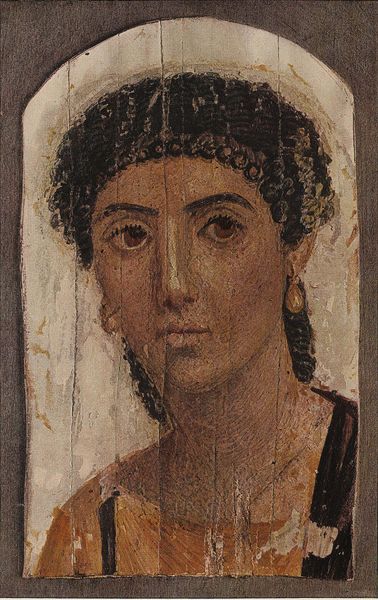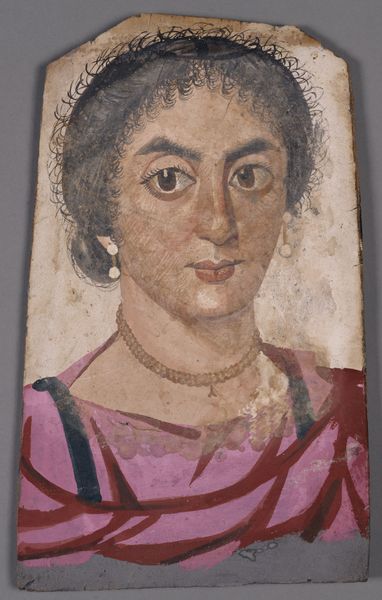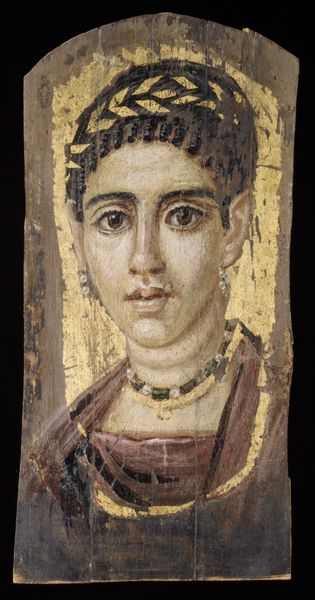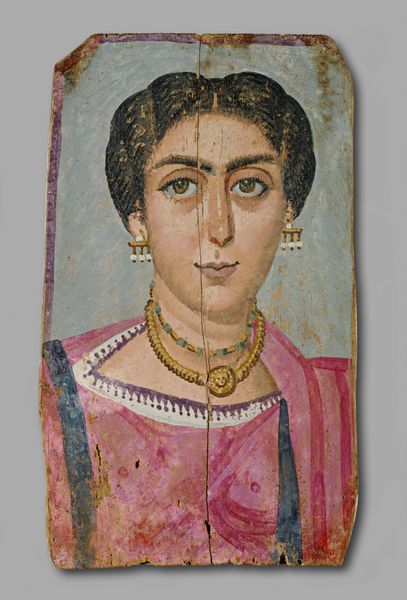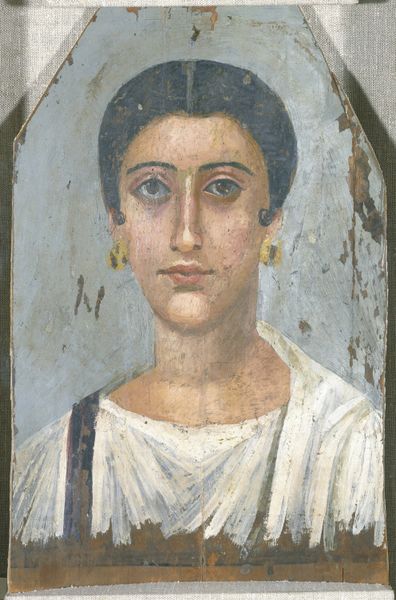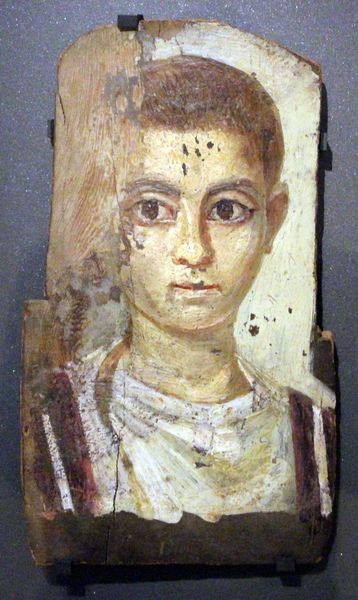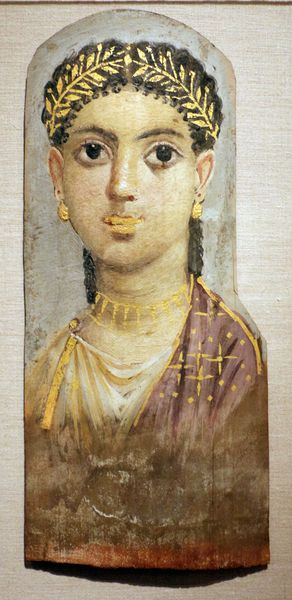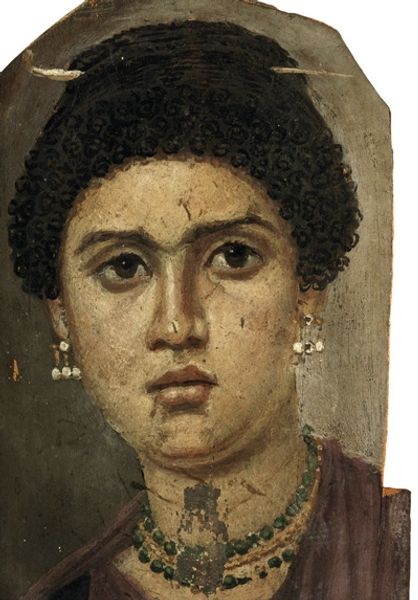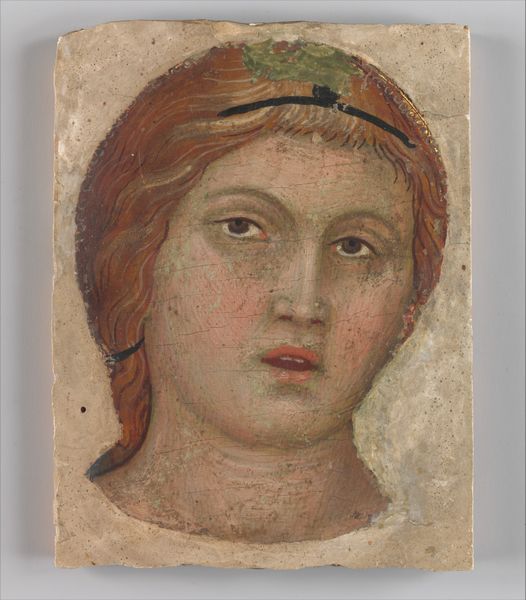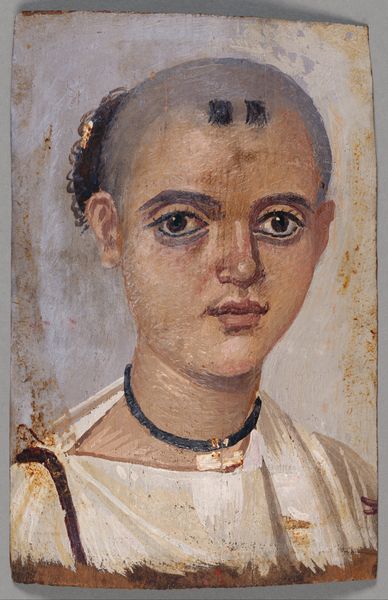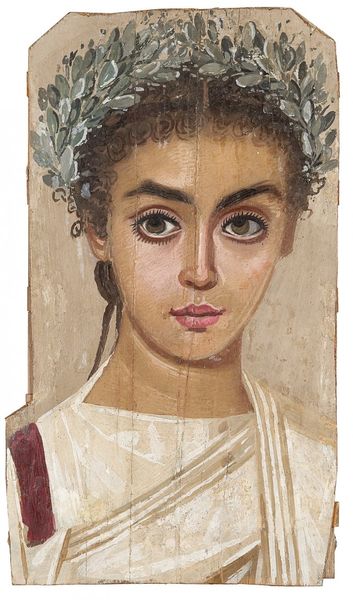
tempera, painting
#
portrait
#
tempera
#
painting
#
ancient-egyptian-art
#
ancient-mediterranean
#
realism
Copyright: Public domain
Curator: This Fayum mummy portrait, currently held at the Louvre, offers a compelling glimpse into a complex era of cultural fusion. The subject gazes out at us with haunting clarity. Editor: There's something profoundly affecting in its realism, yes, but the first thing that strikes me is the sheer material presence of the piece. The way the tempera paint sits on the wood panels, the age evident in the cracks… it feels so tactile, so grounded in its physical construction. Curator: Absolutely, and understanding its social context illuminates the work. These portraits, dating back to Roman Egypt, were funerary adornments, intended to accompany mummified remains. The deceased were often members of the local elite, their identities subtly interwoven with Roman ideals and Egyptian traditions. How does that synthesis affect your material reading? Editor: Knowing its placement directly onto a mummified body gives added gravity to the wood substrate and the paints applied. The tempera itself, typically made with egg yolk, adds another layer of organic material transforming it into an object intimately linked to the cycles of life and death, of transformation. Were specific pigments prized over others? Where would they have been sourced? Curator: These portraits also point to fascinating power dynamics. The individuals immortalized here were likely part of a privileged class negotiating their identity amidst the complex hierarchies of Roman rule. And we can interpret gender and beauty standards from the details in jewelry and clothing... This speaks to me of hybridity, of lives lived at the intersection of multiple cultures. Editor: The layered application of tempera is deceptively simple in appearance, hiding the skilled labor required to produce such refined results. I wonder what sort of training or workshop was typical for such painters? What was their social status? Did they prepare their own panels? The artist would have likely made and prepped his/her own materials using what they had access to, further solidifying a hands-on process in antiquity. Curator: Considering our contemporary vantage point, do you see a dissonance in portraying such individuality as it's bound for entombment, with individual desire yielding to cultural demand? Does it still resonate in the world today? Editor: These considerations add crucial layers to our understanding. The materials testify to labor and localized skill. And these intimate portraits transform funerary practice to a profound material encounter, reaching us even centuries later, showing art-making bridging social needs. Curator: Ultimately, this portrait speaks volumes about cultural negotiations, the legacies of Roman rule, and how artists responded through skillful artistry. It compels me to look further at contemporary issues. Editor: I agree; engaging with the material realities allows us a potent point of contact to see into past lifeways.
Comments
No comments
Be the first to comment and join the conversation on the ultimate creative platform.
